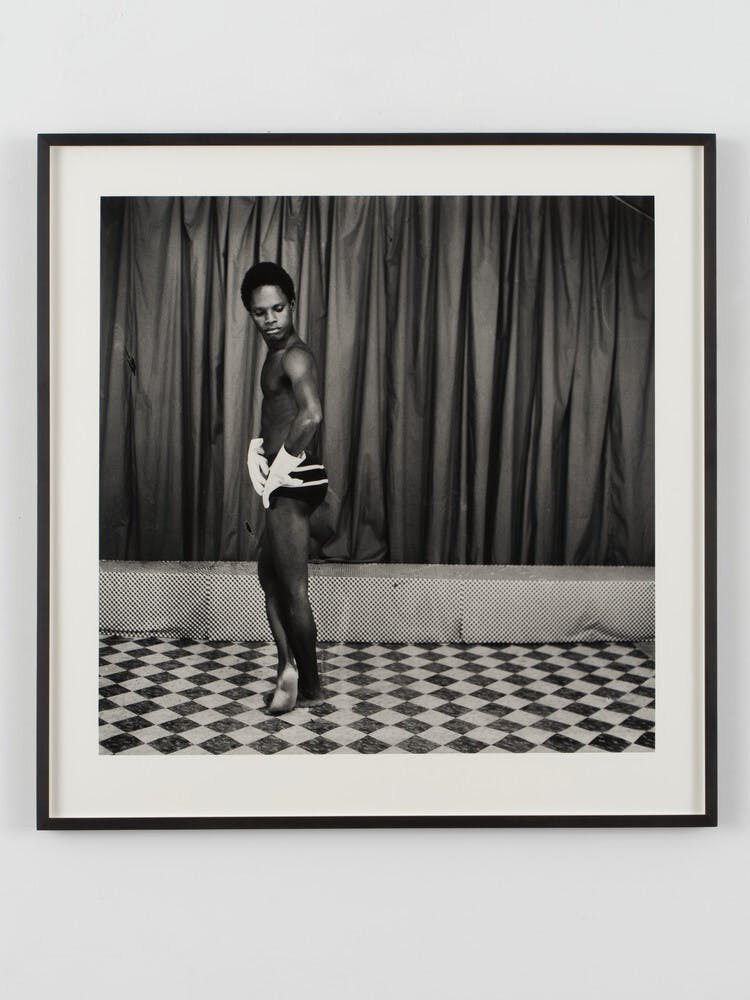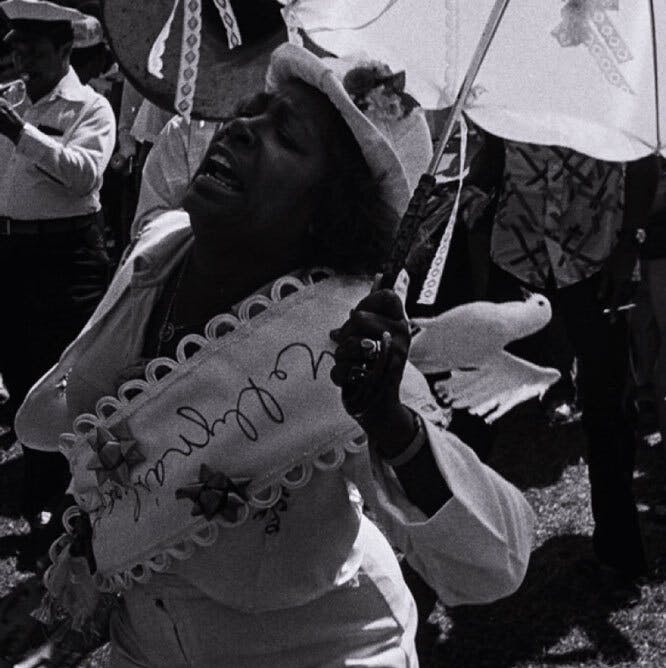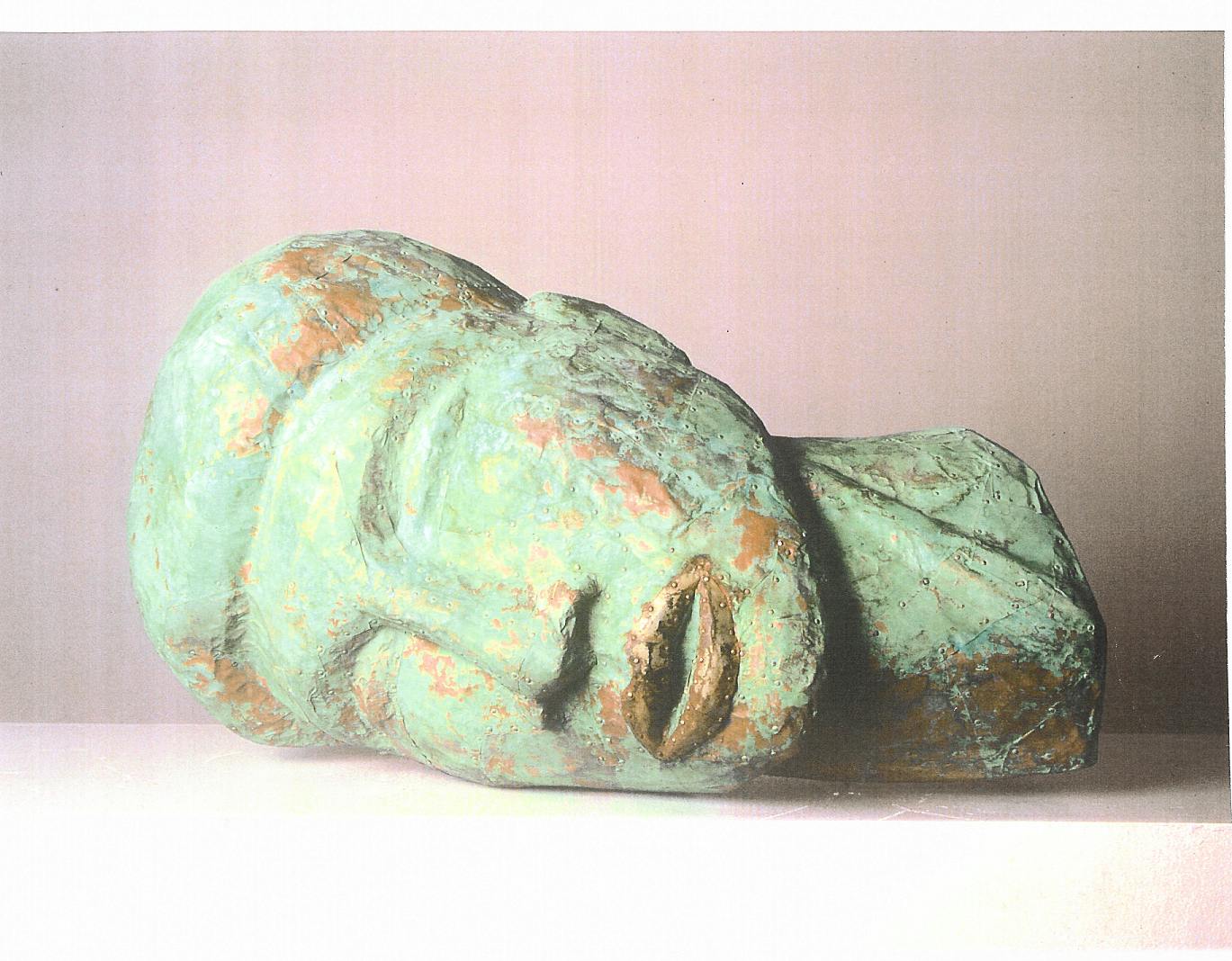Samuel Fosso
(b. 1962)Offering a theatrical style of portraiture and playing with color, poses, and lighting, Samuel Fosso adopts different identities, such as a businessman, pop star, contemporary African politician, or a historical figure like Muhammad Ali. He deconstructs stereotypes of race and gender, underscoring the importance of self-styling and self-representation as a means of power and influence.
Biography
In the wake of the Nigerian Civil War (July 6, 1967–January 15, 1970) and the dangers posed to Igbo people at the time, Samuel Fosso fled to Bangui in the Central African Republic in 1972. He lived and worked with his uncle, a shoemaker, and later sought an apprenticeship with an Igbo photographer. Just three years later, at the age of thirteen, he opened a portrait studio. At the end of the day, he finished rolls of film by taking self-portraits, sending them home to his grandmother as proof of his good health. These works upended conventions of both the commercial photography that Fosso practiced in his studio as well as the common ethnographic representations of African cultures at the time. This initiated his lifelong study of the practices of self-representation.
It was not until 1994, when he won an award in the first photography biennial in Bamako, Mali, that Fosso attracted international attention and began to consider himself an artist: “I did not know I was making art photography. What I did know was that I was transforming myself into what I wanted to become. I was living out a series of ideas about myself.”1 Offering a theatrical style of portraiture and playing with color, poses, and lighting, Fosso adopts different identities, such as a businessman, pop star, contemporary African politician, or a historical figure like Muhammad Ali. He deconstructs stereotypes of race and gender, underscoring the importance of self-styling and self-representation as a means of power and influence.
Fosso’s work in the collections of numerous institutions, such as the Metropolitan Museum of Art, Museum of Modern Art, and Tate Modern. The Studio Museum has presented his work in work in exhibitions including Seeds and Roots: Selections from the Permanent Collection (2004) and Circa 1970 (2016–17).
1 Okwui Enwezor, “Samuel Fosso and the Invention of the Artist as a Young Photographer,” Aperture, August 13, 2020, aperture.org/interviews/samuel-fosso-okwui-enwezor-interview/.
Exhibitions and Events
Samuel Fosso
(b. 1962)Offering a theatrical style of portraiture and playing with color, poses, and lighting, Samuel Fosso adopts different identities, such as a businessman, pop star, contemporary African politician, or a historical figure like Muhammad Ali. He deconstructs stereotypes of race and gender, underscoring the importance of self-styling and self-representation as a means of power and influence.
Self Portrait, 1978
Biography
In the wake of the Nigerian Civil War (July 6, 1967–January 15, 1970) and the dangers posed to Igbo people at the time, Samuel Fosso fled to Bangui in the Central African Republic in 1972. He lived and worked with his uncle, a shoemaker, and later sought an apprenticeship with an Igbo photographer. Just three years later, at the age of thirteen, he opened a portrait studio. At the end of the day, he finished rolls of film by taking self-portraits, sending them home to his grandmother as proof of his good health. These works upended conventions of both the commercial photography that Fosso practiced in his studio as well as the common ethnographic representations of African cultures at the time. This initiated his lifelong study of the practices of self-representation.
It was not until 1994, when he won an award in the first photography biennial in Bamako, Mali, that Fosso attracted international attention and began to consider himself an artist: “I did not know I was making art photography. What I did know was that I was transforming myself into what I wanted to become. I was living out a series of ideas about myself.”1 Offering a theatrical style of portraiture and playing with color, poses, and lighting, Fosso adopts different identities, such as a businessman, pop star, contemporary African politician, or a historical figure like Muhammad Ali. He deconstructs stereotypes of race and gender, underscoring the importance of self-styling and self-representation as a means of power and influence.
Fosso’s work in the collections of numerous institutions, such as the Metropolitan Museum of Art, Museum of Modern Art, and Tate Modern. The Studio Museum has presented his work in work in exhibitions including Seeds and Roots: Selections from the Permanent Collection (2004) and Circa 1970 (2016–17).
1 Okwui Enwezor, “Samuel Fosso and the Invention of the Artist as a Young Photographer,” Aperture, August 13, 2020, aperture.org/interviews/samuel-fosso-okwui-enwezor-interview/.




